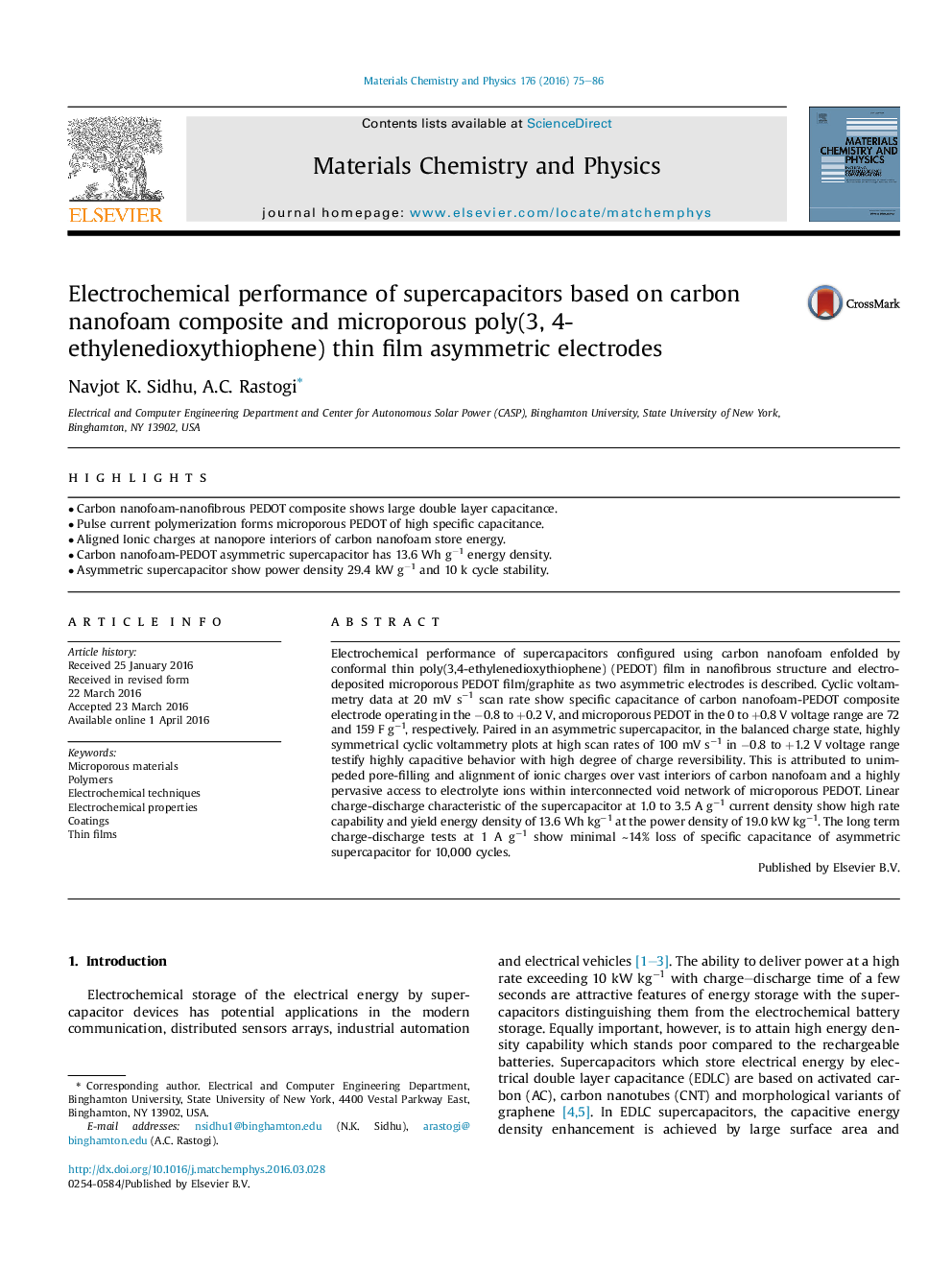| Article ID | Journal | Published Year | Pages | File Type |
|---|---|---|---|---|
| 1520570 | Materials Chemistry and Physics | 2016 | 12 Pages |
Abstract
Electrochemical performance of supercapacitors configured using carbon nanofoam enfolded by conformal thin poly(3,4-ethylenedioxythiophene) (PEDOT) film in nanofibrous structure and electrodeposited microporous PEDOT film/graphite as two asymmetric electrodes is described. Cyclic voltammetry data at 20 mV sâ1 scan rate show specific capacitance of carbon nanofoam-PEDOT composite electrode operating in the â0.8 to +0.2 V, and microporous PEDOT in the 0 to +0.8 V voltage range are 72 and 159 F gâ1, respectively. Paired in an asymmetric supercapacitor, in the balanced charge state, highly symmetrical cyclic voltammetry plots at high scan rates of 100 mV sâ1 in â0.8 to +1.2 V voltage range testify highly capacitive behavior with high degree of charge reversibility. This is attributed to unimpeded pore-filling and alignment of ionic charges over vast interiors of carbon nanofoam and a highly pervasive access to electrolyte ions within interconnected void network of microporous PEDOT. Linear charge-discharge characteristic of the supercapacitor at 1.0 to 3.5 A gâ1 current density show high rate capability and yield energy density of 13.6 Wh kgâ1 at the power density of 19.0 kW kgâ1. The long term charge-discharge tests at 1 A gâ1 show minimal â¼14% loss of specific capacitance of asymmetric supercapacitor for 10,000 cycles.
Keywords
Related Topics
Physical Sciences and Engineering
Materials Science
Electronic, Optical and Magnetic Materials
Authors
Navjot K. Sidhu, A.C. Rastogi,
